Latest news about Bitcoin and all cryptocurrencies. Your daily crypto news habit.
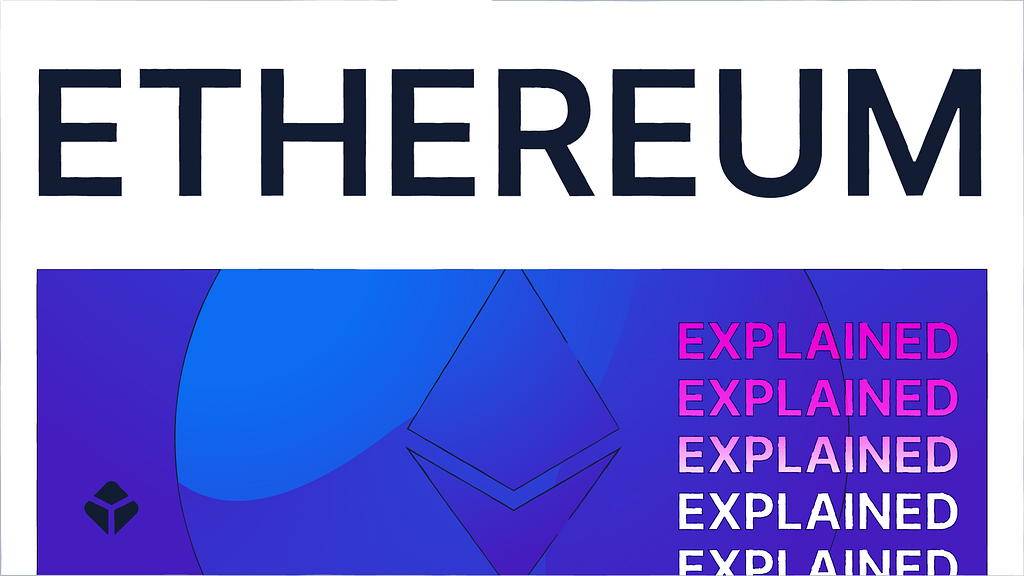
Household names such as Samsung, Amazon, and Microsoft are now using Ethereum, but what exactly makes Ethereum so attractive to investors, entrepreneurs, artists and corporations?
As the second biggest cryptocurrency after Bitcoin, Ethereum is known as “the mother of decentralized applications.”
This article covers everything you need to know about Ethereum basics, what makes Ethereum different from Bitcoin, smart contracts and use-cases, and how to get started with this new and exciting technology.
What is Ethereum?
Ethereum is a decentralized blockchain technology that’s not owned or regulated by a third party such as a government or central bank.
Ethereum is used for building decentralized apps (dApps), holding and transacting cryptocurrency and other digital assets, and creating new cryptocurrencies.
Ethereum’s native cryptocurrency, called ether (abbreviated to ETH), powers Ethereum. Imagine ETH as the fuel and Ethereum as the engine.
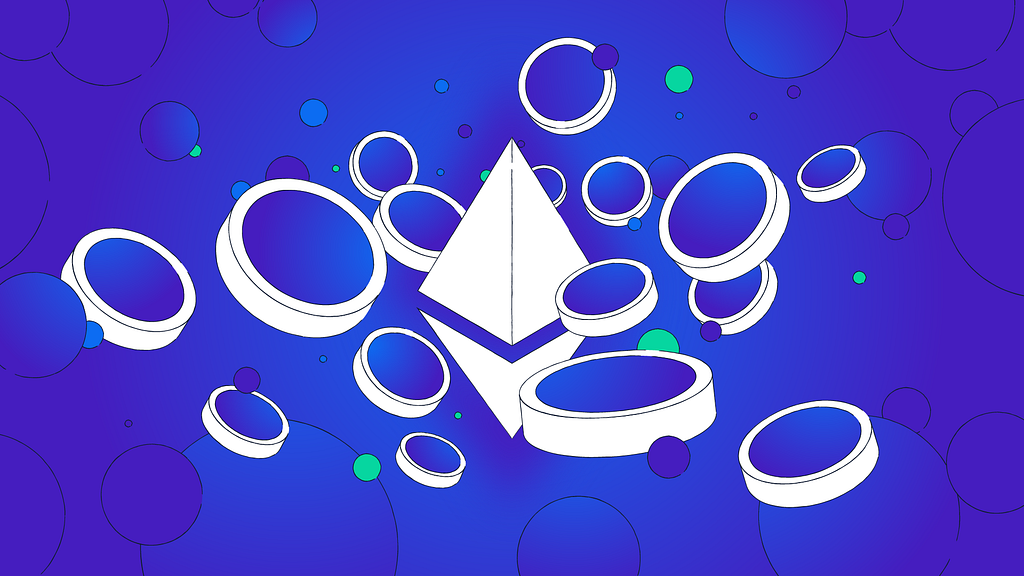
How does Ethereum work?
The Ethereum network is like a large, powerful, decentralized computer.
Through computer code it can complete almost any task if it has enough time, processing power and instructions.
This means a varied range of applications can be built on its blockchain, making Ethereum the rails on which many blockchain-based projects run.
How do Ethereum and Bitcoin compare?
The basic similarities between Bitcoin and Ethereum are:
- They’re not owned or regulated by a third party such as a central bank.
- They both use blockchain technology to record and store transaction details.
- They both have digital currencies (BTC and ETH) that can be stored in cryptocurrency wallets.
However, the main differences are:
- Use case. Ethereum was created as a platform to facilitate smart contracts and dApps. Bitcoin was created as a currency alternative.
- Supply. Ethereum has no limits on its total supply amount and instead uses its own supply and demand economics to define its scarcity. Bitcoin has a fixed total supply of 21 million.
- How it works. Ethereum uses a proof-of-stake consensus algorithm, which means that users can earn rewards by holding ETH in their wallets and staking, or pledging, them to validate transactions. Bitcoin runs on a proof-of-work consensus algorithm, which involves people dedicating computing power to validate transactions (called mining).
Who created Ethereum?
Ethereum was originally proposed by Russian-Canadian programmer, Vitalik Buterin.
In 2013 Buterin released a whitepaper which described a blockchain network that allows developers to create their own dApps.
As a co-founder of Bitcoin magazine, Buterin was already an active member of the crypto community prior to developing Ethereum, and naturally, the network promised to go beyond what the Bitcoin network could offer.
From the development of the whitepaper, many other co-founders joined his vision, including Gavin Wood and Charles Hoskinson.
Today, Ethereum is run by hundreds of thousands of developers located around the world and is constantly evolving.
The most recent example in its evolution is the “Ethereum Merge,” transitioning Ethereum from a proof of work to a proof of stake consensus mechanism.
As proof of stake does not rely on high amounts of computer processing power, the move to proof of stake is said to reduce Ethereum’s energy consumption by approximately 99.95%.
What can you do with Ethereum?
Beyond using ETH like money or a store of value, most of what can be built on Ethereum is through dApps.
A dApp is an application which is run on a decentralized peer-to-peer network as opposed to an app which is run on centralized servers (like Uber or Twitter).
This permissionless nature means that builders can experiment freely without input from a central authority.
Here are some examples:
1. DeFi (Decentralized finance)
Decentralized finance is an umbrella term given to financial services and products like lending, borrowing, and earning interest, that can be accessed on public blockchains without the permission of a third party such as a bank.
Find out more about the basics of DeFi on the Blockchain.com Podcast.
2. NFTs (Non-fungible token)
An NFT is a digital asset stored on a blockchain, that is unique and impossible to replicate.
While other blockchains have implemented their own version of NFTs, the first ever NFT was built on the Ethereum blockchain.
NFTs can represent anything from digital art to in-game items and even real-world assets like land or houses.
Find out more about NFTs on our podcast.
3. DAOs
DAOs are decentralized autonomous organizations. Instead of having a CEO in place, DAOs are collectively owned.
How the organization works and how funds are spent are baked into the Ethereum blockchain through the use of smart contracts.
Find out more about DAOs on our Crypto Basics podcast episode
4. Other cryptocurrencies
You can create your own cryptocurrencies that can be purchased with ETH on the Ethereum blockchain.
There are different guidelines or standards to follow in order to create a token on Ethereum to ensure they are compatible with online Exchanges such as the Blockchain.com Exchange.
The ERC-20 standard is the most popular standard.
Examples of other cryptocurrencies built on Ethereum are Tether and USDC, the two largest stablecoins in the crypto market.
How do you buy ETH?
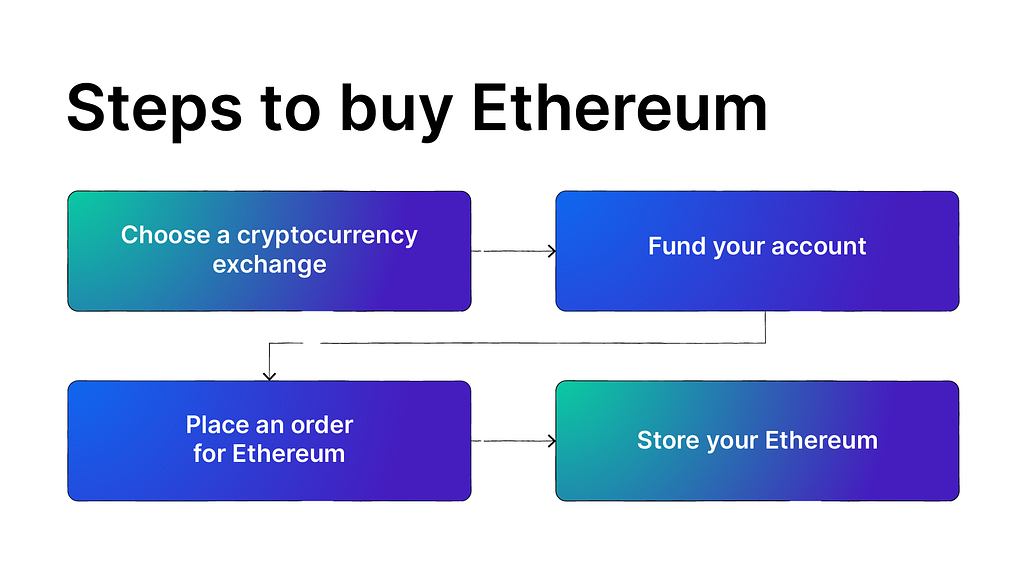
Transacting on the Ethereum network
Here’s a simple breakdown of what happens when someone wants to send Ether using blockchain technology.
- Every Ethereum transaction made, along with the sender’s public key, is recorded in a public list called the blockchain. Each facilitated transaction will charge the sender a ‘gas fee’.
- The main mechanism by which Ethereum transactions are confirmed and validated is called “proof of stake”. A proof of stake mechanism means that anyone who wants to add new blocks to the chain must stake (offer up) at least 32 ETH and run specialized validator software.
- Participants are then selected at random to add blocks to the blockchain in return for the gas fee as payment. The full public list is then distributed to every computer that is connected to the Ethereum network.
Re-cap: What are gas fees?
Ethereum “gas” is the fee that’s applied to carry out a transaction or execute a smart contract on the Ethereum blockchain.
The “gas fee” is priced at fractions of ETH and the amount depends on the supply and demand of the network at the time of the transaction.
Re-cap: What is proof of stake?
The recent Ethereum Merge refers to developers changing Ethereum’s consensus mechanism from proof of work to proof of stake to ensure every transaction and new block added on the network is valid.

How can you build on Ethereum?
Every node (computer participating on the Ethereum network) holds a copy of the Ethereum Virtual Machine (EVM).
The EVM is a piece of software that acts like a decentralized “computer” that has the ability to execute millions of projects through the use of “smart contracts”.
What is a smart contract?
A smart contract is a self-executing contract in which the terms of an agreement between two or more parties are written as lines of code, which are baked into the blockchain.
A traditional contract is often slow, relies on trust and often physical record keeping.
Since smart contracts exist in a public ledger, they are distributed throughout the blockchain network so the terms of the agreement cannot be tampered with or changed.
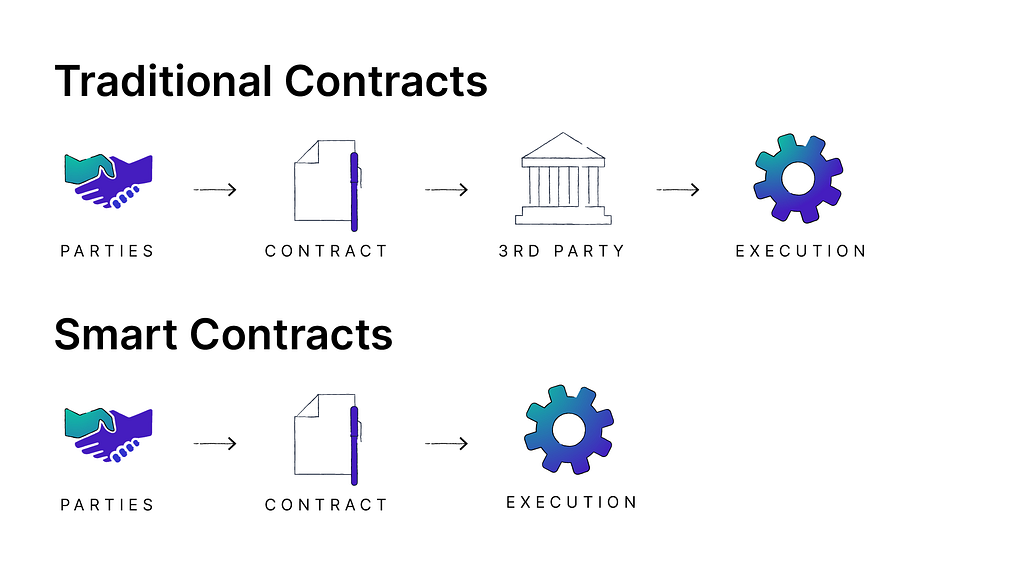
Smart contracts are like digital “if-then” statements which can be synced with external databases — if a condition of the contract is met then the agreement is approved.
For example:
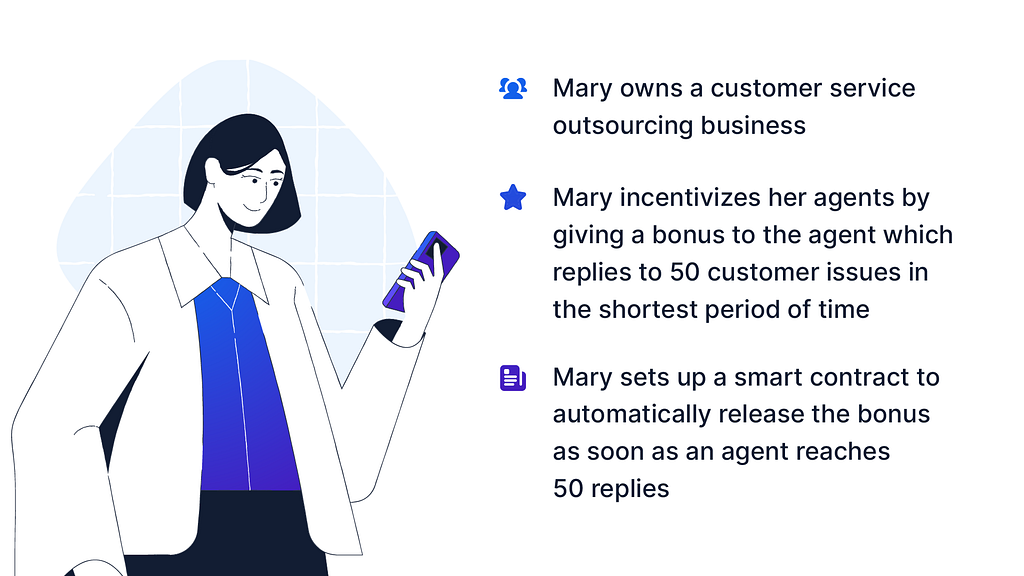
What industries use Ethereum smart contracts?
Insurance
AXA insurance used smart contracts to automatically pay out flight delay insurance claims. They applied a smart contract to air traffic databases, and when a delay is detected, the smart contract will automatically pay the relevant customers.
Supply chain
Grocery stores such as Walmart have implemented smart contracts to track the end-to-end journey of items. This offers more transparency across product sources as well as quickly highlighting identifying missing products.
Real estate
Seattle-based company SMARTRealty introduced smart contracts to record information such as monthly payment amount, duration of a contract and contract auto-renew, into the blockchain.
What’s the future of Ethereum?
In 1989, British scientist Tim Berners-Lee created the open-source and free-to-use World Wide Web (WWW), making it possible for the internet to evolve as fast as it has. Buterin upheld this spirit in writing the Ethereum whitepaper.
In 2021, Berners-Lee sold the original source code for the WWW as an NFT on the Ethereum blockchain, and the symbolic baton was passed.
Beyond offering a new revenue stream for creators and laying the technical foundations for start-up developers, Ethereums’ role in creating a version of the internet that gives ownership back to the user is pivotal.
And after a highly successful Ethereum Merge proving the network’s resistance, a new chapter in Ethereum’s history has just started.
If you’re excited about Ethereum, you can purchase ETH today on Blockchain.com using the Blockchain.com Wallet.
Ethereum staking is now available on the Blockchain.com Wallet. You can learn more about staking here.
Ethereum, Explained was originally published in @blockchain on Medium, where people are continuing the conversation by highlighting and responding to this story.
Disclaimer
The views and opinions expressed in this article are solely those of the authors and do not reflect the views of Bitcoin Insider. Every investment and trading move involves risk - this is especially true for cryptocurrencies given their volatility. We strongly advise our readers to conduct their own research when making a decision.